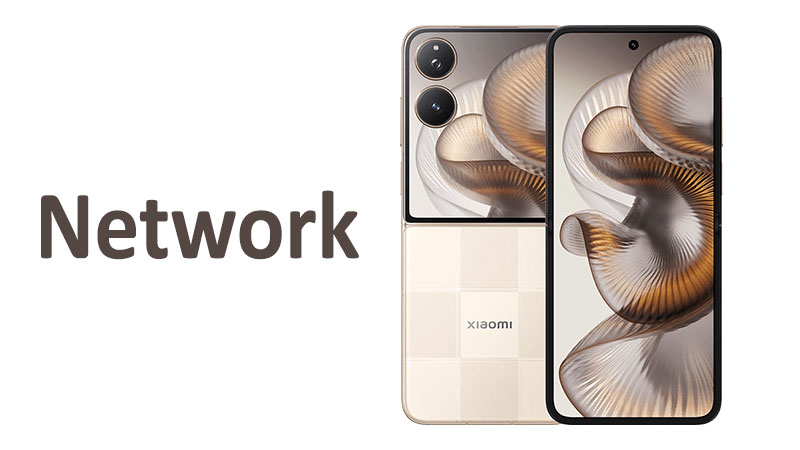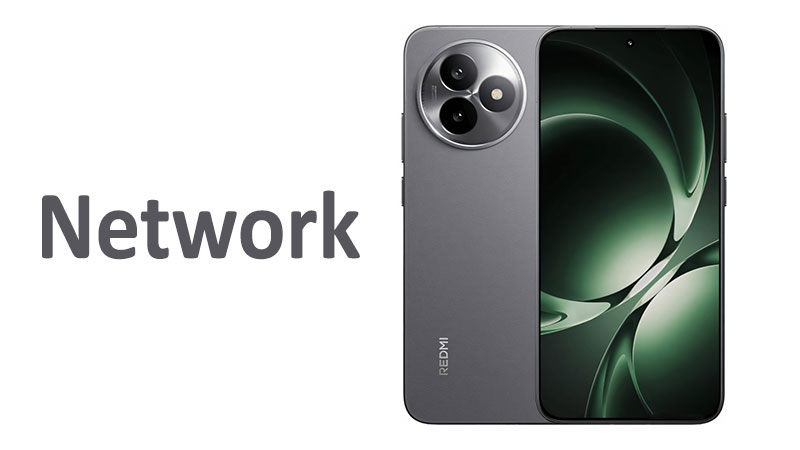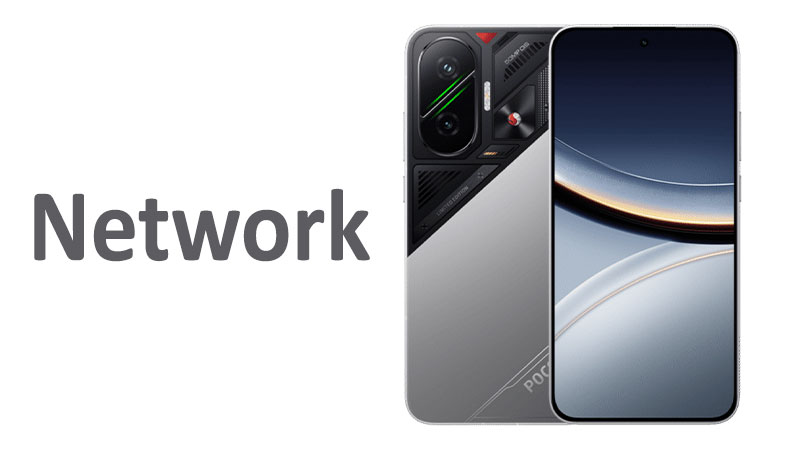In the rapidly evolving landscape of foldable smartphones, the Xiaomi Mix Flip 2 stands out. It offers a powerful blend of innovative design and high-end specifications. One of the most critical aspects for any modern smartphone is its network connectivity. This determines not only your call quality but also your data speeds, streaming experience, and overall mobile freedom. Understanding the network capabilities of the Xiaomi Mix Flip 2 is essential for anyone considering this device. This comprehensive article delves into every facet of its network support, from 5G to Wi-Fi, providing a detailed analysis for both tech enthusiasts and everyday users.
A Deep Dive into Network Capabilities
The Xiaomi Mix Flip 2 is engineered to be a global contender. It is equipped with a wide array of network technologies to ensure seamless connectivity in various regions. The device supports a complete suite of modern network standards. This includes GSM, CDMA, HSPA, CDMA2000, LTE, and most importantly, 5G. This broad compatibility is a significant advantage. It allows users to switch between carriers and travel internationally without major connectivity issues.
The phone’s core strength lies in its 5G network support. It is designed to work with both SA (Standalone) and NSA (Non-Standalone) 5G modes. This dual-mode capability is crucial for future-proofing the device. It ensures compatibility with the latest 5G infrastructure rollouts globally. The phone supports a large number of 5G bands, including n1, n2, n3, n5, n7, n8, n12, n20, n26, n28, n38, n40, n41, n48, n66, n77, and n78. This extensive list is a key indicator of its global readiness.
For 4G LTE, the Xiaomi Mix Flip 2 is equally well-equipped. It supports FDD-LTE and TDD-LTE with a comprehensive list of bands. These include B1, B2, B3, B4, B5, B7, B8, B12, B17, B18, B19, B20, B26, B28, B34, B38, B39, B40, B41, B42, B48, and B66. This extensive band support is critical for maintaining strong and stable connections. It is especially important in areas where 5G is not yet widely deployed. The phone also supports older networks like 3G (WCDMA) and 2G (GSM). This provides a reliable fallback for areas with limited or no LTE/5G coverage.
Comparing the Xiaomi Mix Flip 2 Network
To truly appreciate the Xiaomi Mix Flip 2’s network capabilities, it is helpful to compare it with its predecessor and key competitors.
vs. Xiaomi Mix Flip (First Generation)
The first-generation Xiaomi Mix Flip was already a strong performer. However, the Mix Flip 2 takes a significant step forward. The new model features a more advanced modem within its Snapdragon 8 Elite chipset. This translates to more efficient data processing and potentially faster peak speeds. While the first model also had broad 5G support, the Mix Flip 2 includes a more comprehensive set of global bands. This improves its international usability right out of the box. The inclusion of Wi-Fi 7 is another major upgrade over the Wi-Fi 6/6E of the previous model, offering superior wireless connectivity.
vs. Samsung Galaxy Z Flip 7 FE
The Samsung Galaxy Z Flip series is the primary competitor in the clamshell foldable market. When comparing the Xiaomi Mix Flip 2 network with the Samsung Galaxy Z Flip 7 FE, a few key differences emerge. The Xiaomi Mix Flip 2 is often a step ahead in terms of raw specifications. It includes the latest Qualcomm Snapdragon 8 Elite chipset, which may offer more advanced modem features and better power efficiency than the Exynos 2400 in the Samsung. The Xiaomi phone also boasts a wider array of 5G bands. This is particularly beneficial for users who travel frequently or use carriers with less common band deployments. Furthermore, the Xiaomi Mix Flip 2’s inclusion of Wi-Fi 7 provides a significant edge over the Wi-Fi 6E found in many competing models. This is particularly relevant for users with the latest home or office network setups.
Pros and Cons of the Xiaomi Mix Flip 2 Network
Pros:
- Extensive 5G Band Support: The phone supports a vast number of 5G bands. This ensures excellent compatibility with a wide range of carriers and international networks.
- Dual SIM, Dual Standby: The device features dual nano-SIM card slots. This allows users to manage two different phone numbers simultaneously. This is perfect for separating work and personal lines or for using a local SIM card when traveling.
- Wi-Fi 7 Capability: The inclusion of the latest Wi-Fi standard, Wi-Fi 7, provides future-proof wireless connectivity. It offers higher speeds, lower latency, and better efficiency compared to older Wi-Fi standards.
- Carrier Aggregation: The phone supports advanced network features like carrier aggregation. This combines multiple network bands to increase data speeds and improve network stability, especially in congested areas.
Cons:
- Regional Variations: As with many Xiaomi devices, the network bands supported may vary by region. A version released for the Chinese market might not have all the same bands as a global version. This is a critical point for potential buyers, especially those in the US.
- eSIM Support: The Chinese version of the phone reportedly does not support eSIM. This is a potential drawback for users who prefer the convenience and flexibility of digital SIMs.
- Carrier Specific Features: While the hardware is highly capable, some carrier-specific features like VoLTE (Voice over LTE) and Wi-Fi Calling might require specific software configurations. These may not be enabled on the Chinese-market model for non-Chinese carriers.
Conclusion
The Xiaomi Mix Flip 2 is a formidable foldable smartphone. Its network capabilities are among its most impressive features. With extensive support for 5G, 4G LTE, and the latest Wi-Fi 7 standard, it is built for a future of fast, reliable connectivity. The dual-SIM functionality and advanced modem technology make it a powerful tool for a globalized world.
However, potential buyers must exercise caution, especially when considering an imported model. The distinction between a Chinese and a global version is critical. While the hardware is world-class, software and network band limitations can impact the user experience outside of China. For those who can get their hands on a global version, or for users in regions with compatible network bands, the Xiaomi Mix Flip 2 offers a top-tier connectivity experience.
Its superior network features, including wide 5G band support and Wi-Fi 7, set it apart from many competitors. This makes it an excellent choice for anyone who prioritizes speed, reliability, and future-proof technology. In the end, the Xiaomi Mix Flip 2 network is a major selling point, but a well-informed purchase decision is paramount to unlocking its full potential.
FAQ
Yes, the Xiaomi Mix Flip 2 has comprehensive 5G support, including both SA and NSA modes and a wide array of global 5G bands.
While the phone may work on some US networks, full compatibility is not guaranteed. The Chinese-market model may lack specific bands and software configurations required for optimal performance on major US carriers.
The Mix Flip 2 offers enhanced network capabilities, including a more advanced chipset, a wider range of 5G bands, and support for the newer Wi-Fi 7 standard, which is an upgrade from the Wi-Fi 6/6E on the first model.
The Chinese version of the Xiaomi Mix Flip 2 does not support eSIM functionality. It uses two physical nano-SIM card slots.
Absolutely. With its extensive 5G and Wi-Fi 7 support, the Xiaomi Mix Flip 2 provides high data speeds and low latency. This is ideal for high-resolution video streaming, cloud gaming, and other demanding online activities.



